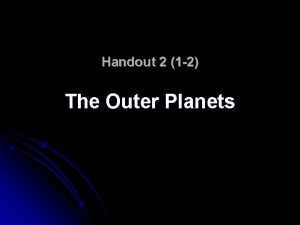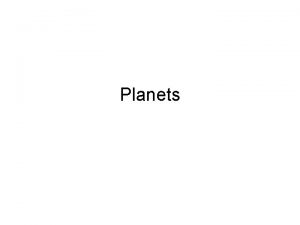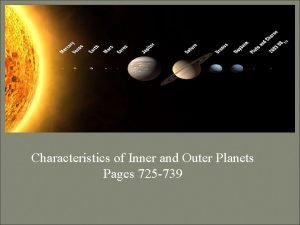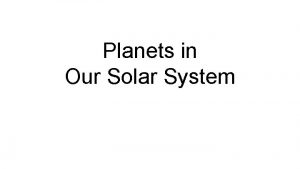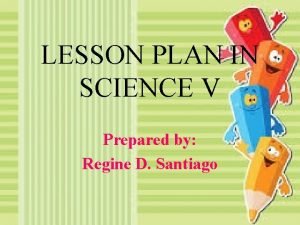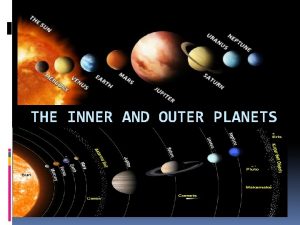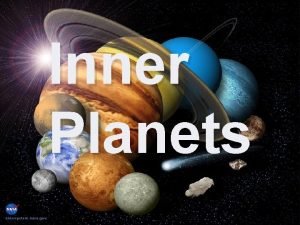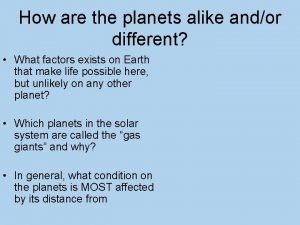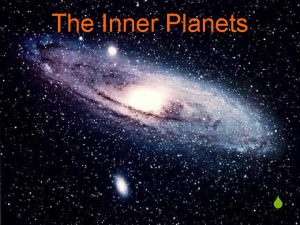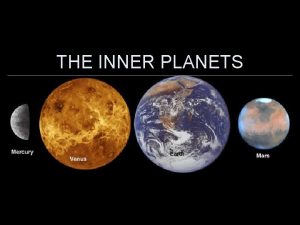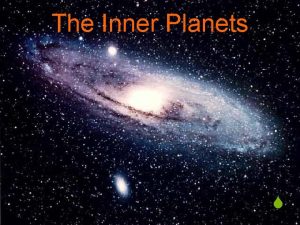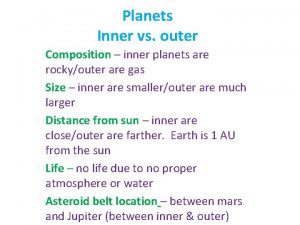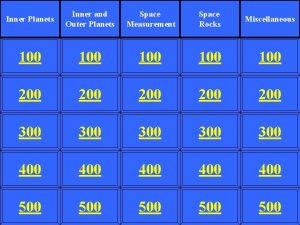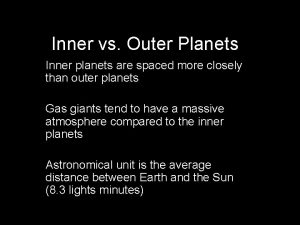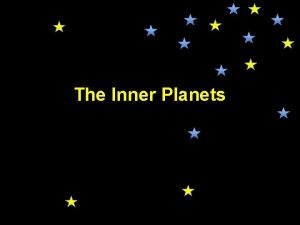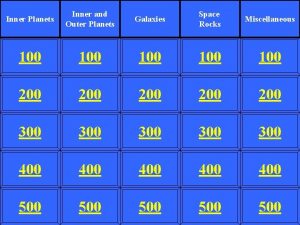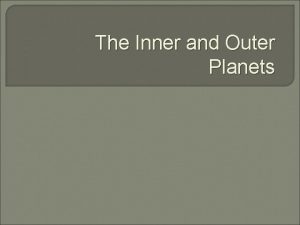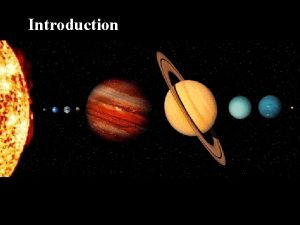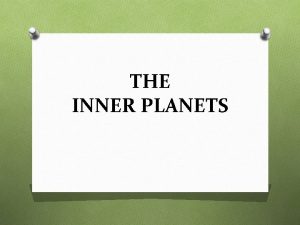Inner Planets Planet The International Astronomical Union IAU

















- Slides: 17

Inner Planets

Planet The International Astronomical Union (IAU) defines a planet as a body that: �is in orbit around the sun �has sufficient mass for its self-gravity to assume nearly round shape, and �has cleared the neighborhood around its orbit. Source: IAU Resolution 5 B

Why should we study the planets? Learning about the other planets helps us understand a lot about Earth.

Inner Planets �Also called the terrestrial planets �Near to the sun �Small planets �Composed primarily of rocks and iron �Includes Mercury, Venus, Earth and Mars Source: Encarta encyclopedia 2009

Inner Planets (except Pluto)

Mercury

Mercury �Closest planet to the sun �Smallest planet in solar system �Has many craters and looks more like Earth’s moon �Has a very thin atmosphere �The temperature varies from 330°C to 750°C �Dry, hot and virtually airless.

Venus

Venus �Second planet from the sun �Known as Earth’s twin �One Venus day is longer than one Venus year �Hottest planet in the solar system with temperatures reaching 860°C �It’s atmosphere is composed mainly of carbon dioxide

Venus �Appears to have phases like the moon and Mercury �The “morning and evening star” �Third brightest object in the sky

Venus

Earth �Third planet from the sun �The only planet known to support life �Atmosphere is composed of 78% nitrogen, 21% oxygen �The surface is about 70% water

Earth

Mars

Mars �Also known as the “red planet” �Has polar ice caps that vary during seasons �Has many craters �Has the largest volcano, the Olympus Mons �Atmosphere consists predominantly of carbon dioxide

Mars

That’s all for now! Source of planetary images: www. nasa. gov
 Inner planets and outer planets
Inner planets and outer planets What separates the inner and outer planets?
What separates the inner and outer planets? The inner solar system by leslie
The inner solar system by leslie By listening to my inner defender voice i can be sure that
By listening to my inner defender voice i can be sure that Vocales a e o
Vocales a e o International association of astronomical artists
International association of astronomical artists The first four outer planets are
The first four outer planets are Why are jovian planets bigger than terrestrial
Why are jovian planets bigger than terrestrial Matching planet rings
Matching planet rings Planets groups
Planets groups Characteristic of mars
Characteristic of mars Solar system characteristics
Solar system characteristics Kidsastronomy.com/solar system
Kidsastronomy.com/solar system Inner outer planets venn diagram
Inner outer planets venn diagram My very excited mother just served us nachos
My very excited mother just served us nachos What separates the inner and outer planets
What separates the inner and outer planets Inner planets
Inner planets How are the inner planets alike
How are the inner planets alike








